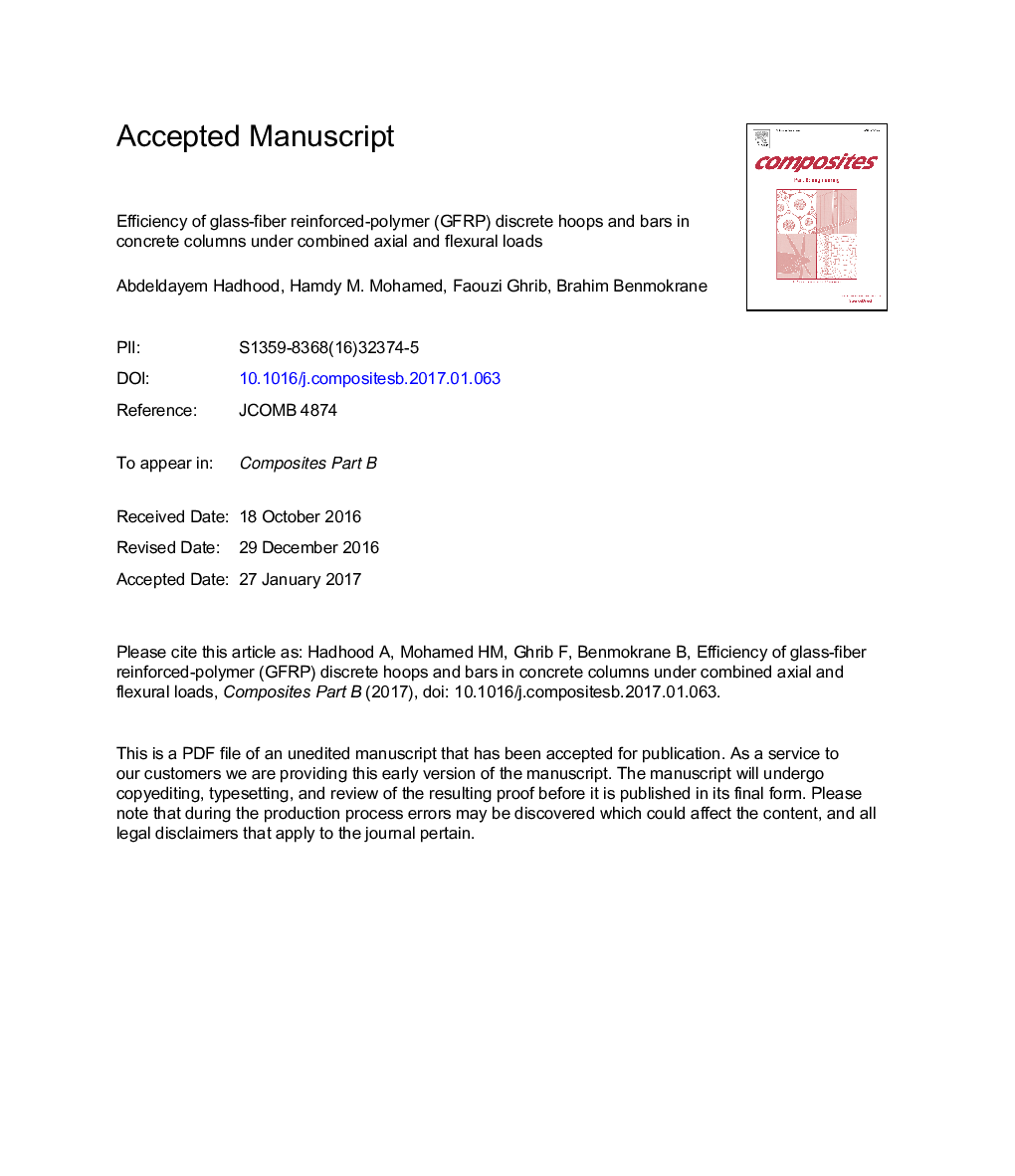| Article ID | Journal | Published Year | Pages | File Type |
|---|---|---|---|---|
| 5021390 | Composites Part B: Engineering | 2017 | 49 Pages |
Abstract
Discrete hoop reinforcement is preferable over continuous spiral reinforcement due to ease of construction in bridge applications. This research presents the experimental results of full-scale circular concrete columns reinforced with glass-fiber-reinforced-polymer (GFRP) bars and confined with GFRP discrete hoops subjected to combined axial compression loads and bending moments. The findings of the experimental work were integrated with a theoretical analysis based on the strain computability and force equilibrium to extend the parametric study. The lowest and highest bounds of the mechanical properties of GFRP reinforcement along with concrete strength and reinforcement ratio were employed. Sets of axial force-bending moment (P-M) interaction diagrams and indicative guide charts are introduced, and recommendations drawn. The compressive-strength contribution of GFRP reinforcement is reviewed and discussed. The results reveal that the GFRP bars developed compression and tension strains up to â0.003 and 0.008 at peak loads and up to â0.015 and 0.0135 at failure on the compression and tension sides, respectively. The confinement provided by GFRP discrete hoops (9.5 mm) spaced at 80 mm prevented the buckling of longitudinal GFRP bars up to and even past the peak load until failure occurred. Based on the experimental and theoretical results, the minimum GFRP longitudinal reinforcement ratio was found to be 1% in order to prevent tension failure (GFRP-bar rupture), provided that the mechanical properties comply with the limits of the available codes and standard.
Related Topics
Physical Sciences and Engineering
Engineering
Engineering (General)
Authors
Abdeldayem Hadhood, Hamdy M. Mohamed, Faouzi Ghrib, Brahim Benmokrane,
